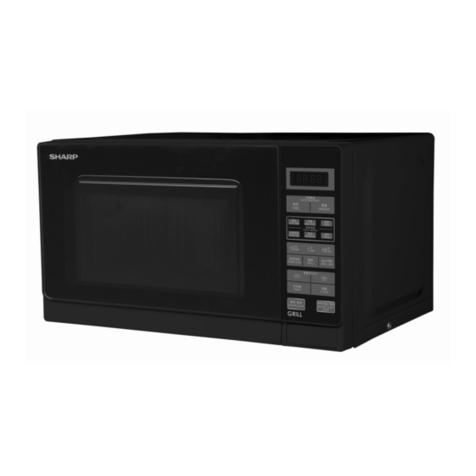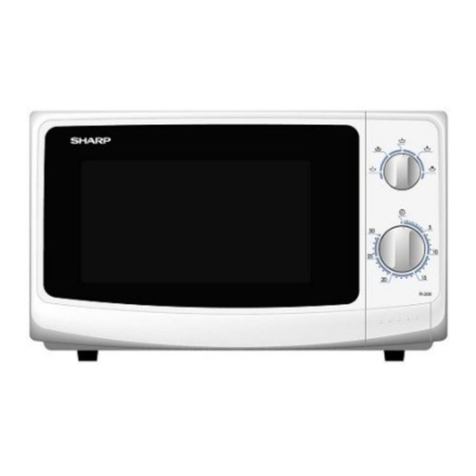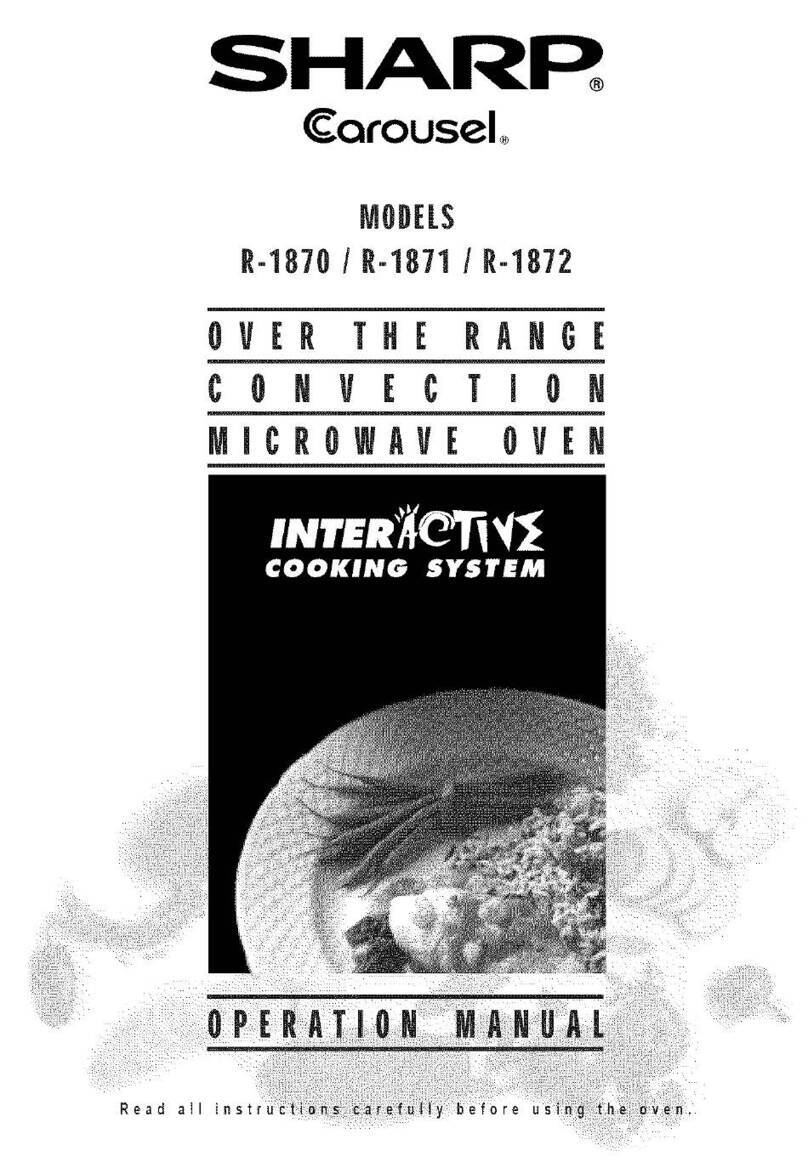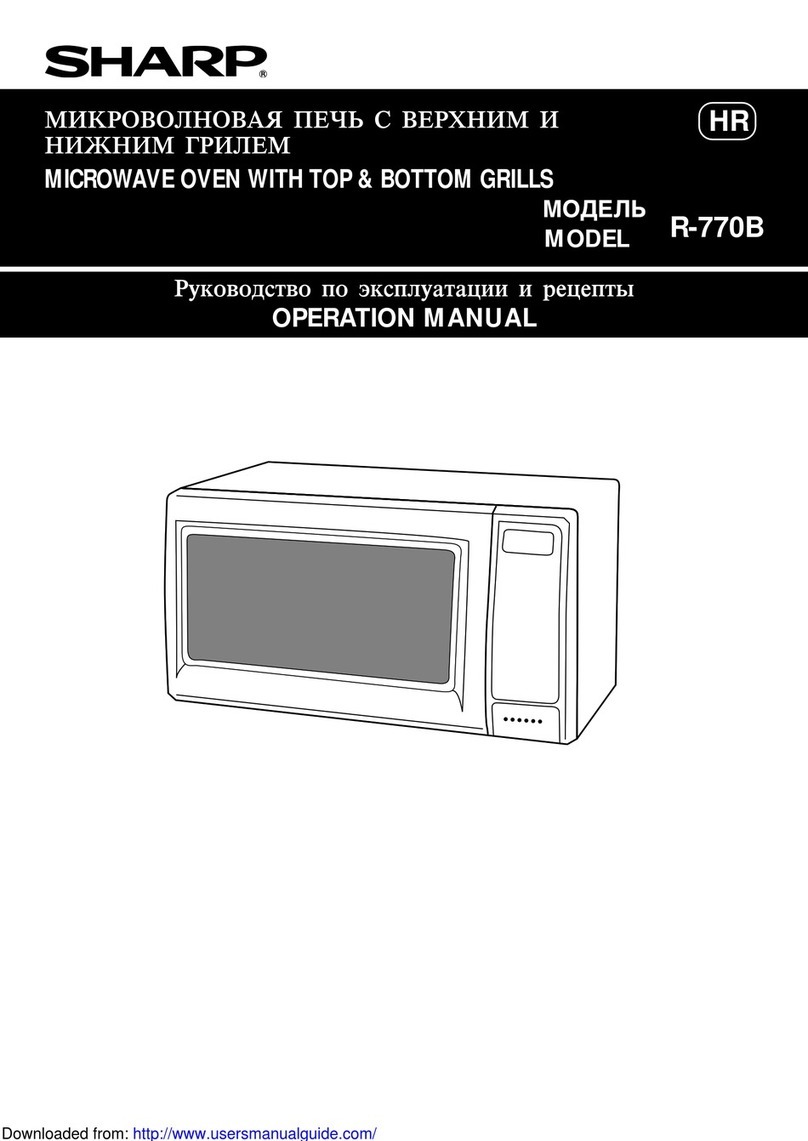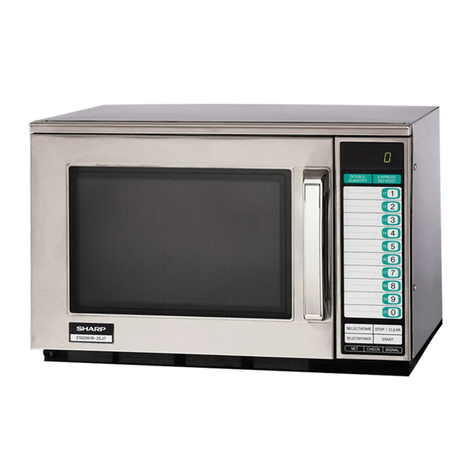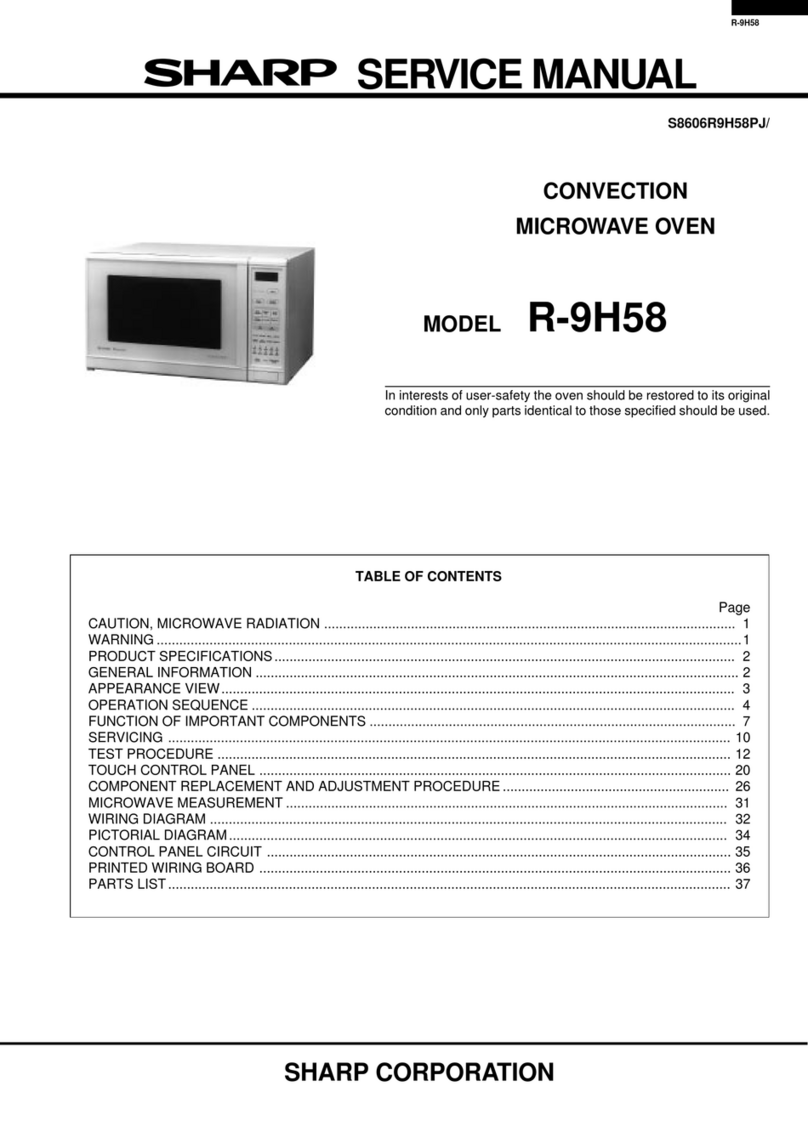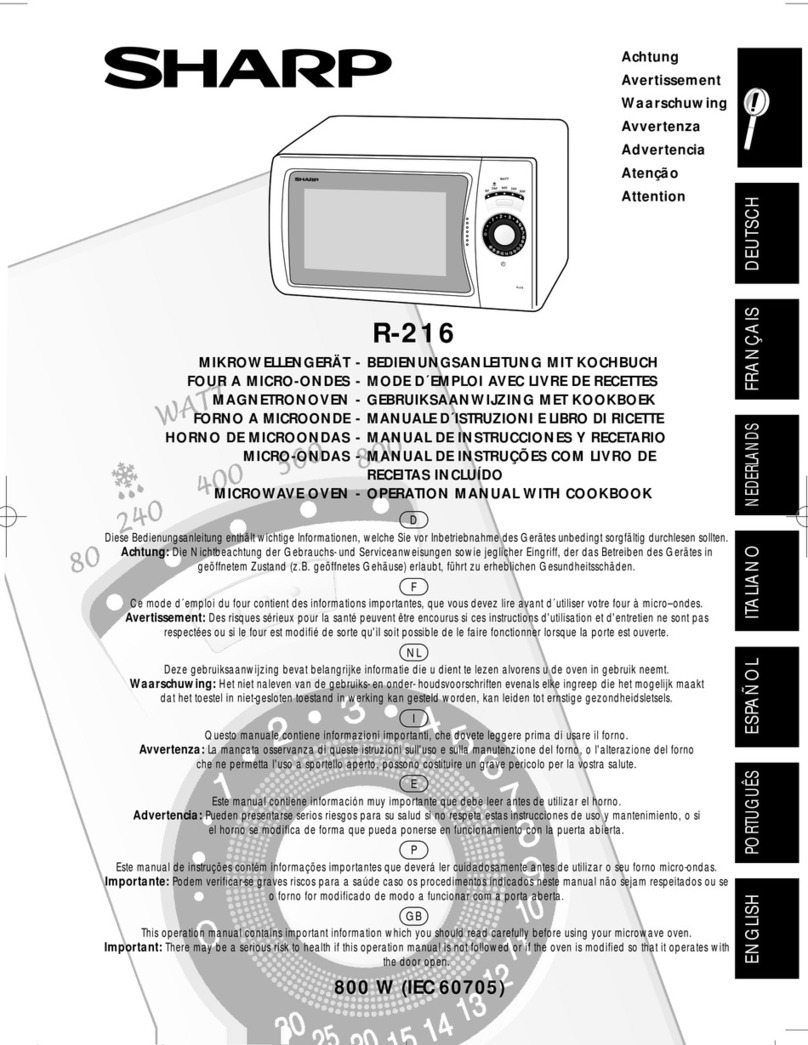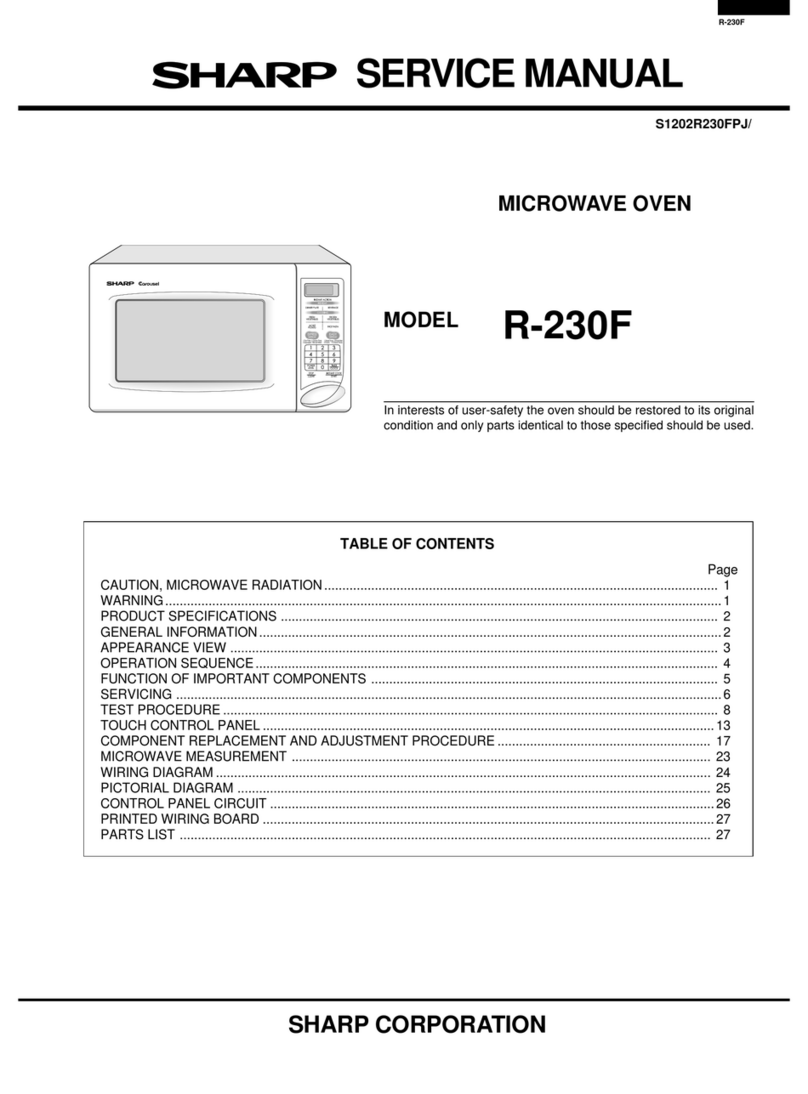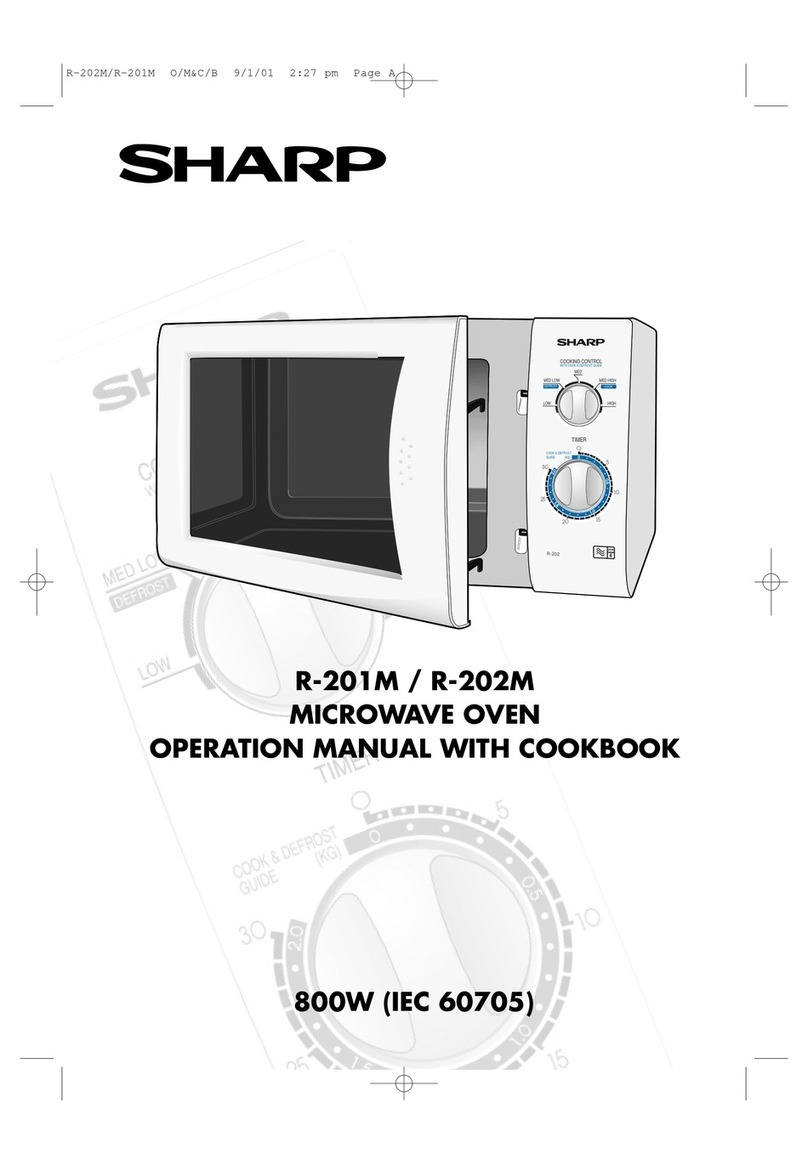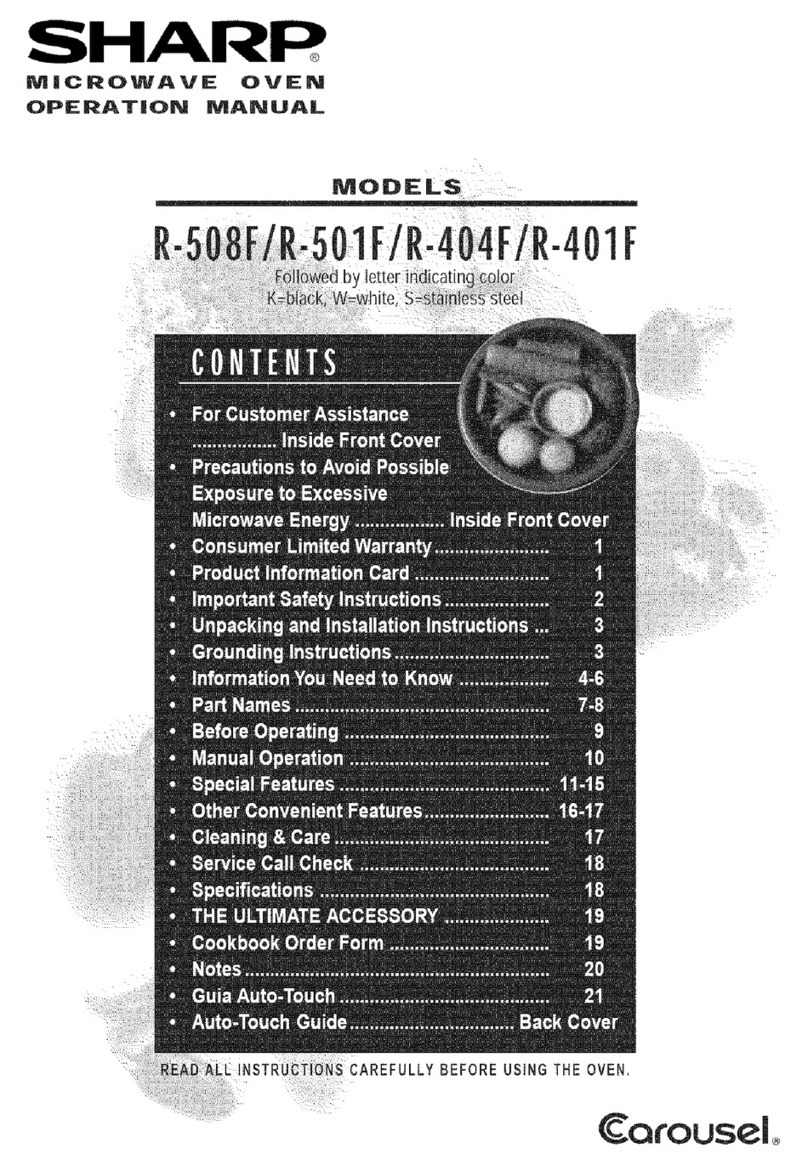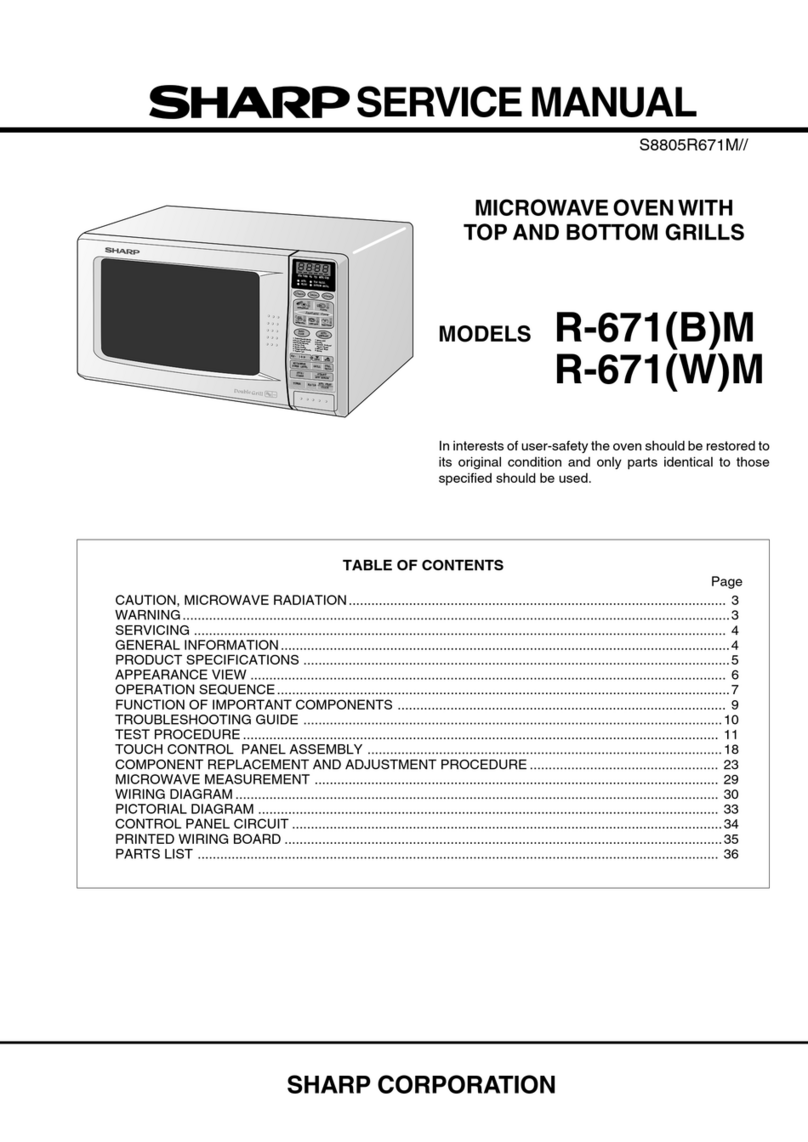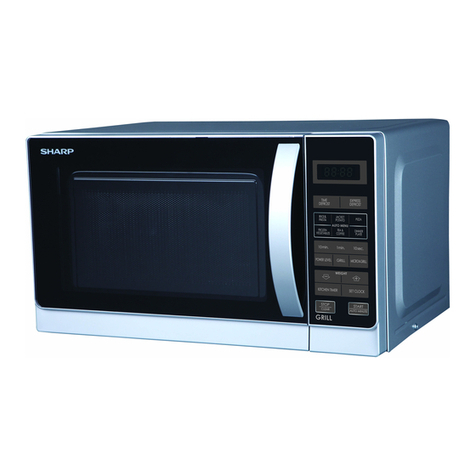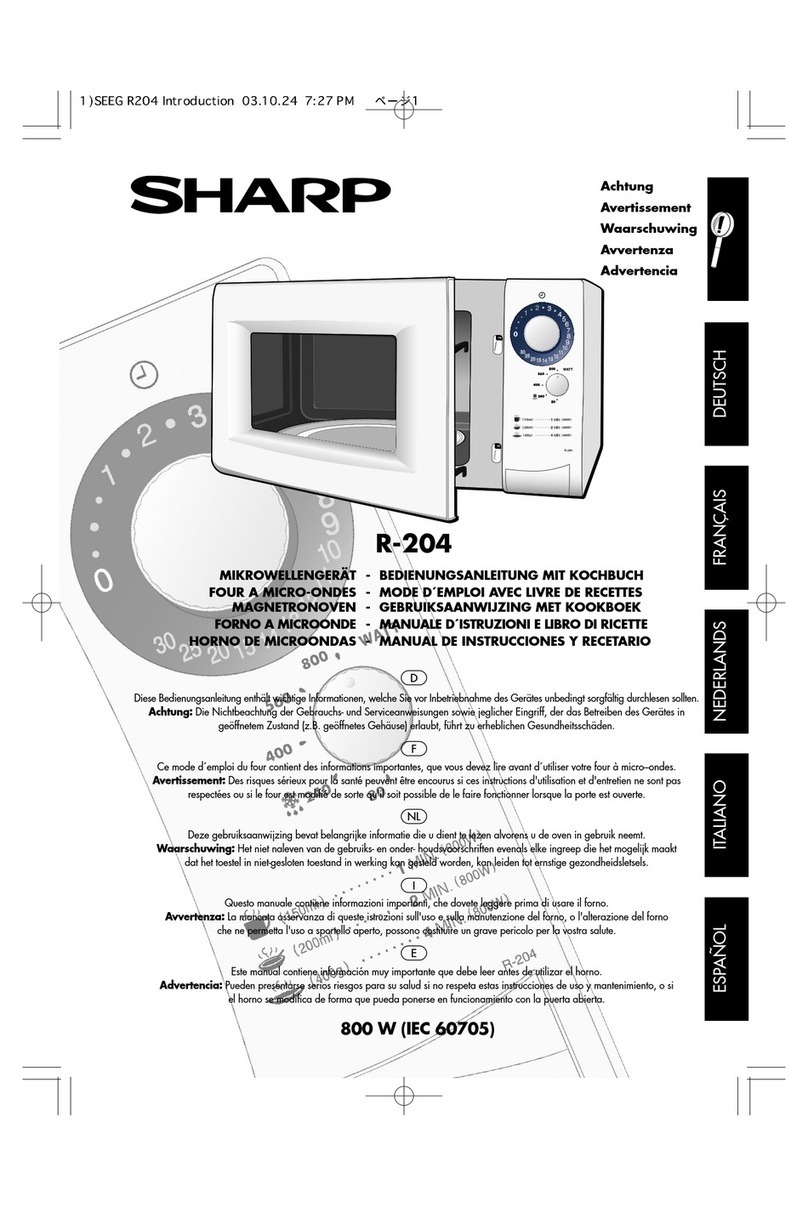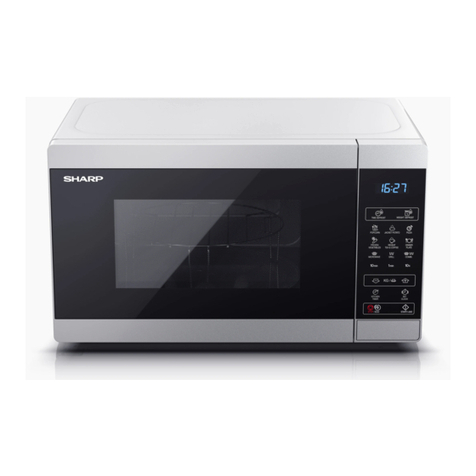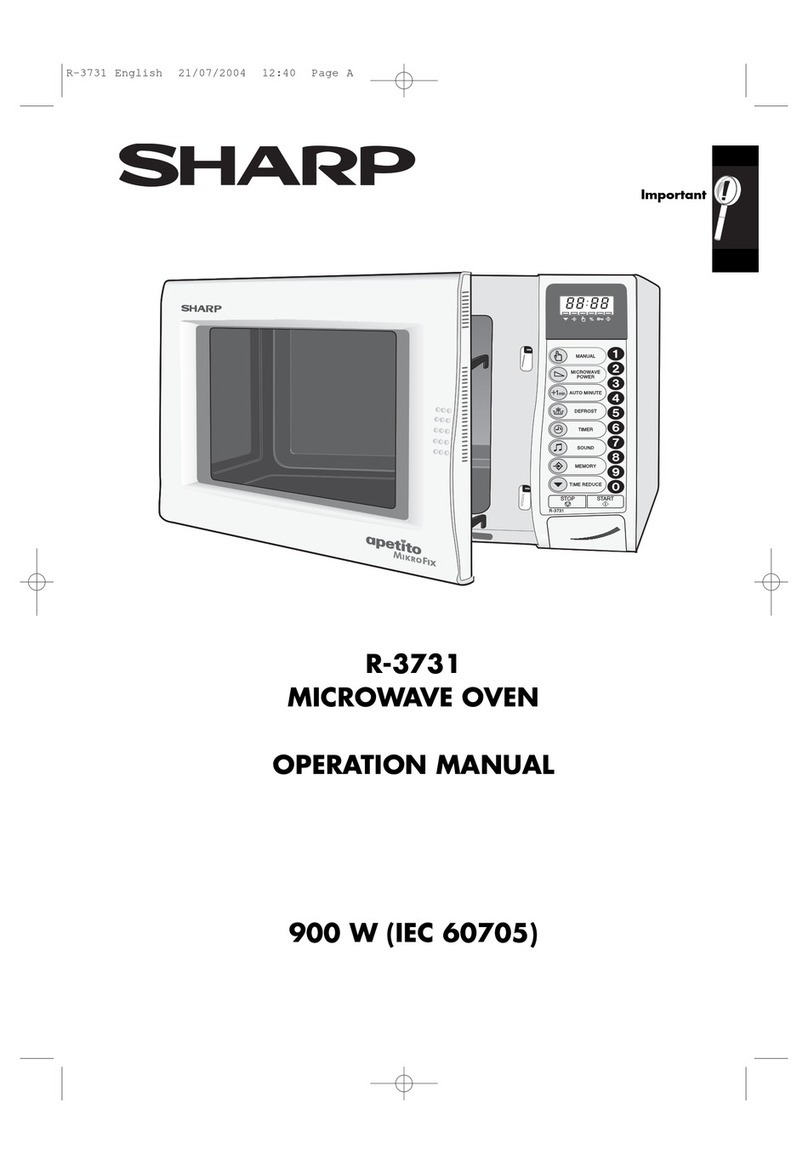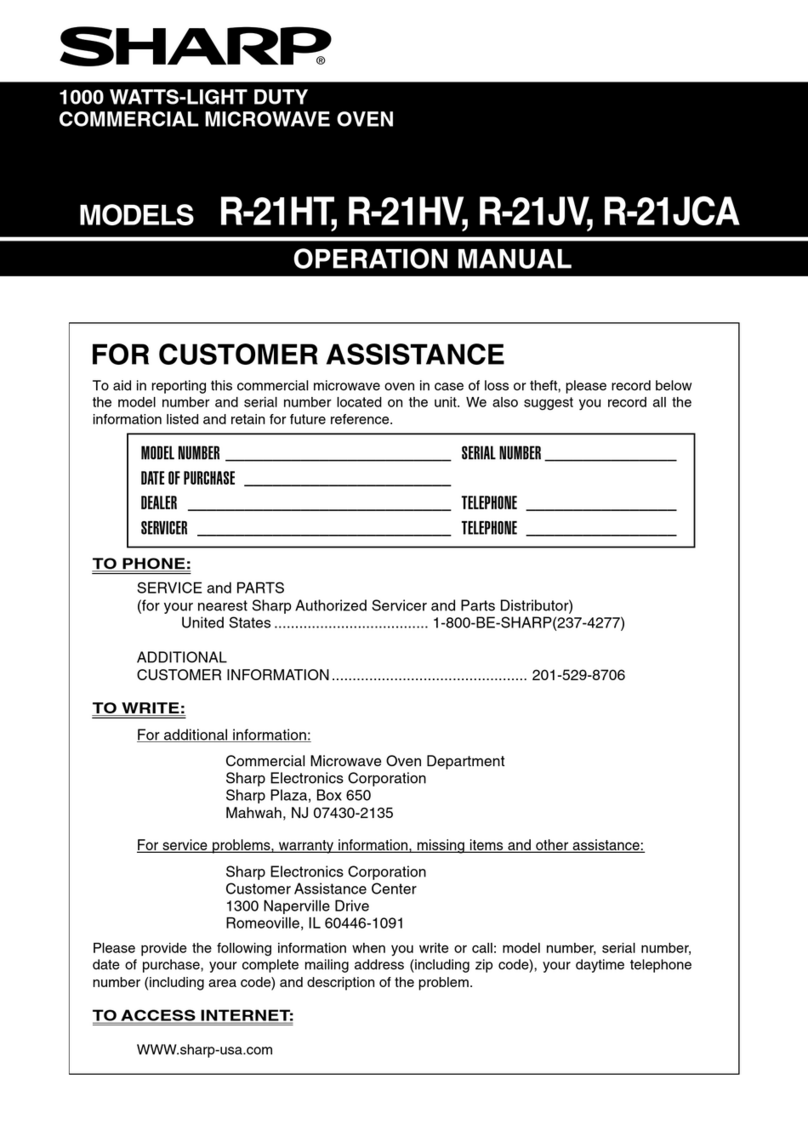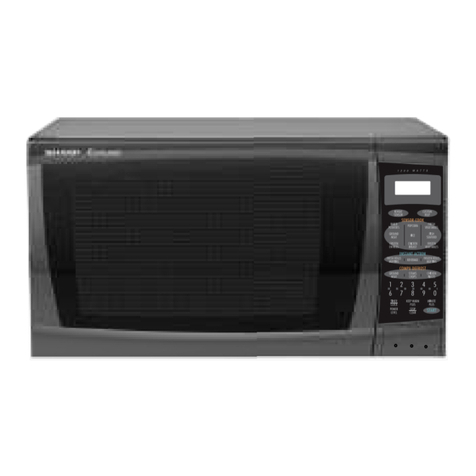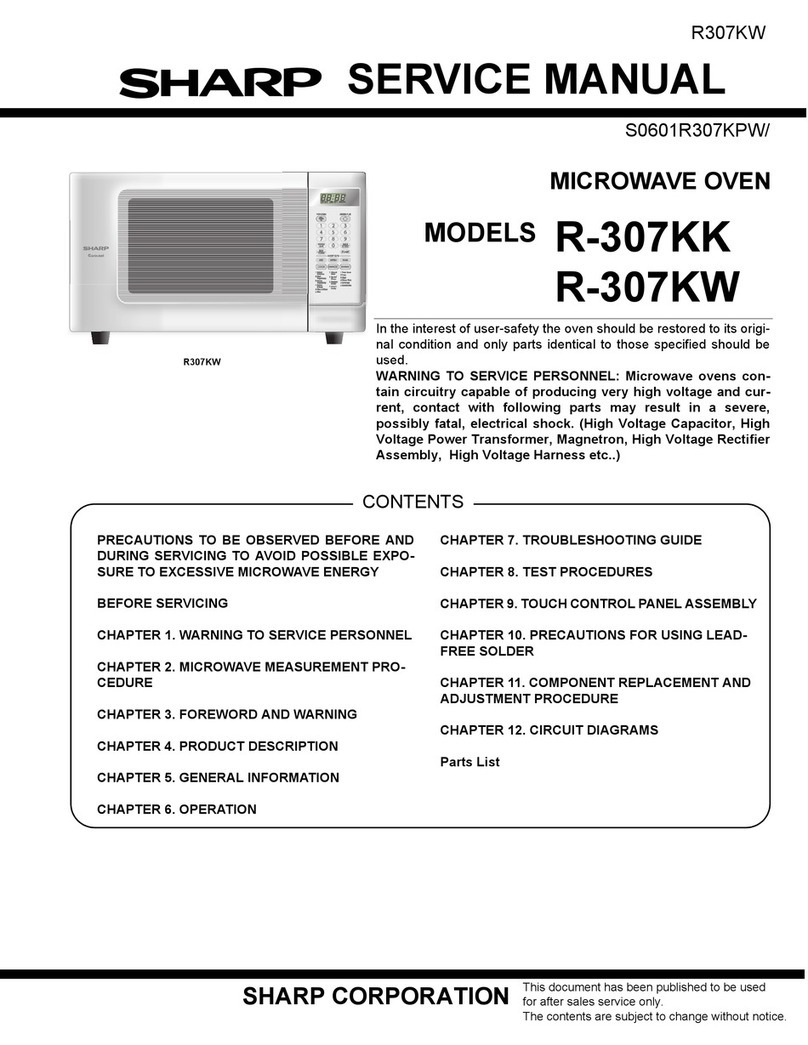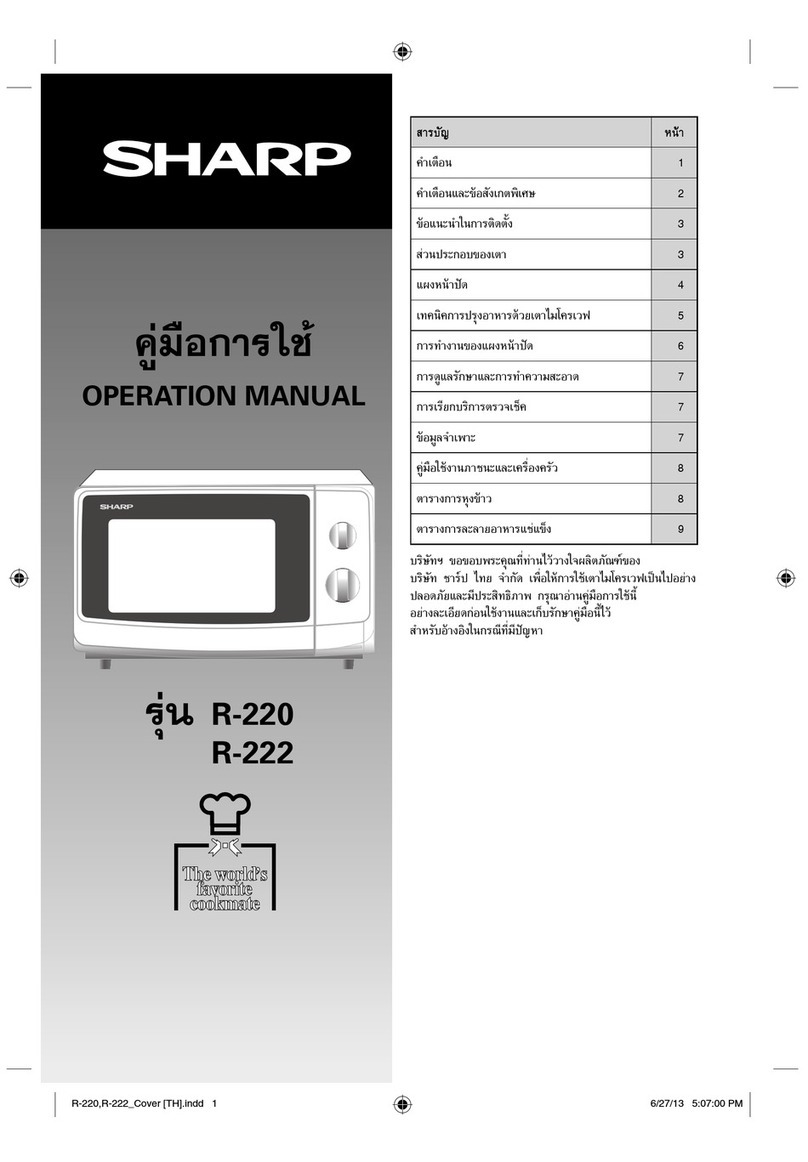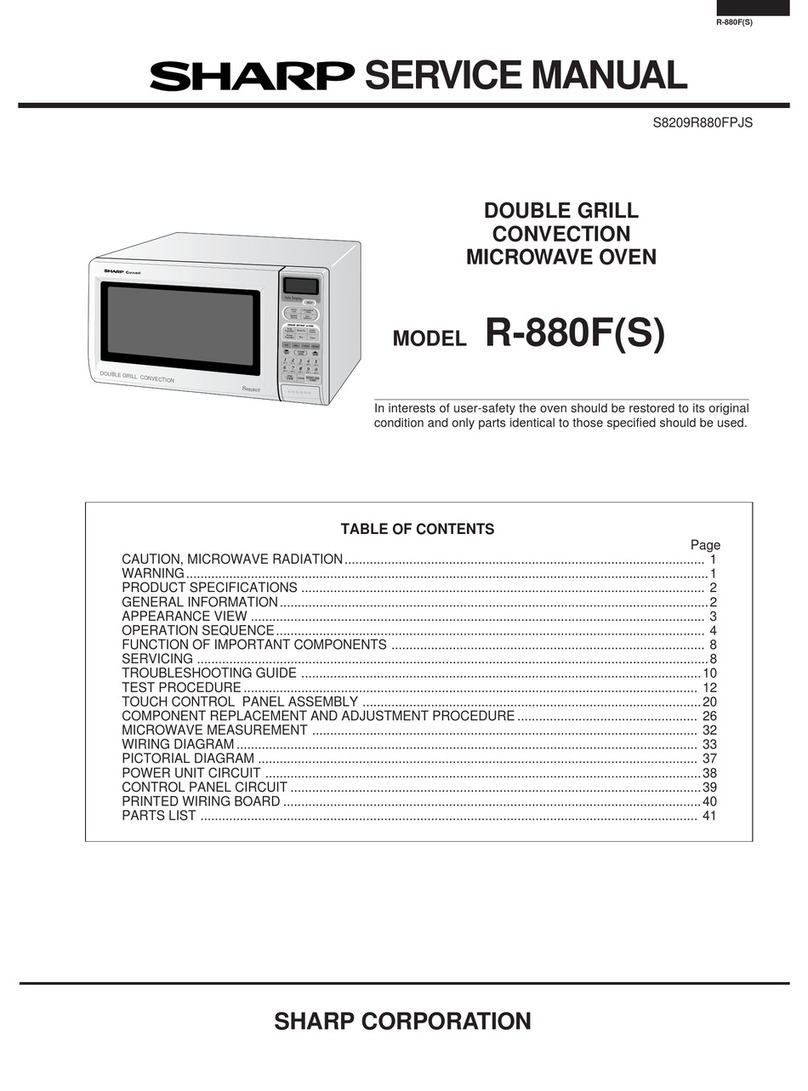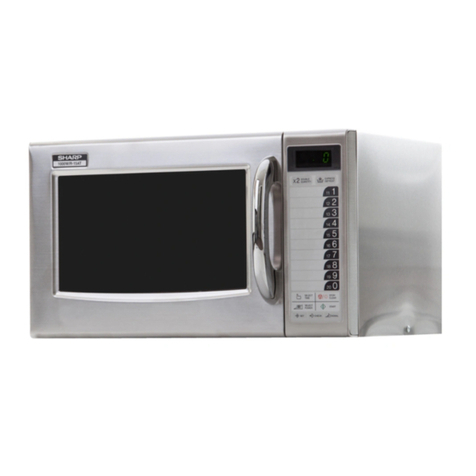R-3S56
4
OPERATION SEQUENCE
OFF CONDITION
Closing the door activates all door interlock switches
(1st. latch switch, 2nd. latch switch and stop switch).
IMPORTANT
When the oven door is closed, the monitor switch contacts
(COM-NC) must be open.
When the microwave oven is plugged in a wall outlet, rated
voltage is supplied to the point A3+A5 in the control unit.
Figure O-1 on page 25
1. The display shows " 0".
NOTE: When the oven door is opened, the oven lamp
comes on at this time.
MICROWAVE COOKING CONDITION
HIGH COOKING
EnteradesiredcookingtimewiththetouchingTimekeyand
start the oven with touching START key.
Function sequence
Figure O-2 on page 25
CONNECTED COMPONENTS RELAY
Oven lamp, Fan motor, Turntable motor RY1
Power transformer RY2
1. Rated voltage is supplied to the primary winding of the
powertransformer.Thevoltageisconvertedtoabout3.3
volts A.C. output on the filament winding and high
voltageofapproximately2000voltsA.C.onthesecondary
winding.
2. The filament winding voltage (3.3 volts) heats the
magnetron filament and the high voltage (2000 volts) is
senttothevoltagedoublingcircuit,whereitisdoubledto
negative voltage of approximately 4000 volts D.C..
3. The 2450 MHz microwave energy produced in the
magnetron generates a wave length of 12.24 cm. This
energy is channelled through the waveguide (transport
channel)intotheovencavity,wherethefoodisplacedto
be cooked.
4. When the cooking time is up, a signal tone is heard and
therelaysRY1+RY2gobacktotheirhomeposition.The
circuits to the oven lamp, power transformer, fan motor
and turntable motor are cut off.
5. When the door is opened during a cook cycle, the
switches come to the following condition.
CONDITION
DURING DOOR OPEN
SWITCH CONTACT COOKING
(NOCOOKING)
1st. latch switches COM-NO Closed Open
2nd. latch switch COM-NO Closed Open
Monitor switch COM-NC Open Closed
Stop switch COM-NO Closed Open
The circuits to the power transformer, fan motor and
turntable motor are cut off when the 1st. latch switch,
2nd. latch switch, and stop switch are made open. The
oven lamp remains on even if the oven door is opened
after the cooking cycle has been interrupted, because
the relay RY1 stays closed. Shown in the display is the
remaining time.
6. MONITOR SWITCH CIRCUIT
The monitor switch is mechanically controlled by oven
door,andmonitorstheoperationofthe1stand2nd.latch
switches.
6-1 Whentheoven door isopenedduringorafter the cycle
of a cooking program, the 1st. latch and 2nd. latch
switch must open their contacts first.
Afterthat thecontacts(COM-NC) ofthemonitor switch
can be closed.
6-2. Whentheoven dooris closed,the contacts(COM-NC)
of the monitor switch must be opened. After that the
contactsofthe1st.latch,2nd.latchandstopswitchare
closed and the contacts (COM-NO) of the stop switch
can be opened.
6-3. When the oven door is opened and the contacts of the
1st and 2nd latch switches remain closed. The fuse
M6.3A will blow, because the monitor switch is closed
and a short circuit is caused.
MEDIUM HIGH, MEDIUM, MEDIUM LOW, LOW
COOKING
When the microwave oven is preset for variable cooking
power, rated voltage is supplied to the power transformer
intermittently within a 32-second time base through the
relaycontactwhichiscoupledwiththecurrent-limitingrelay.
The following levels of microwave power are given.
SETTING;
32 sec. ON
24 sec. ON
18 sec. ON
12 sec. ON
6 sec. ON
8 sec. OFF
14 sec. OFF
20 sec. OFF
26 sec. OFF
HIGH
MEDIUM HIGH
MEDIUM
MEDIUM LOW
LOW
Approx. 70%
Approx. 50%
Approx. 30%
Approx. 10%
NOTE: TheON/OFFtimeratiodoesnotexactlycorrespond
to the percentage of microwave power, because
approx. 2 seconds are needed for heating up the
magnetron filament.
